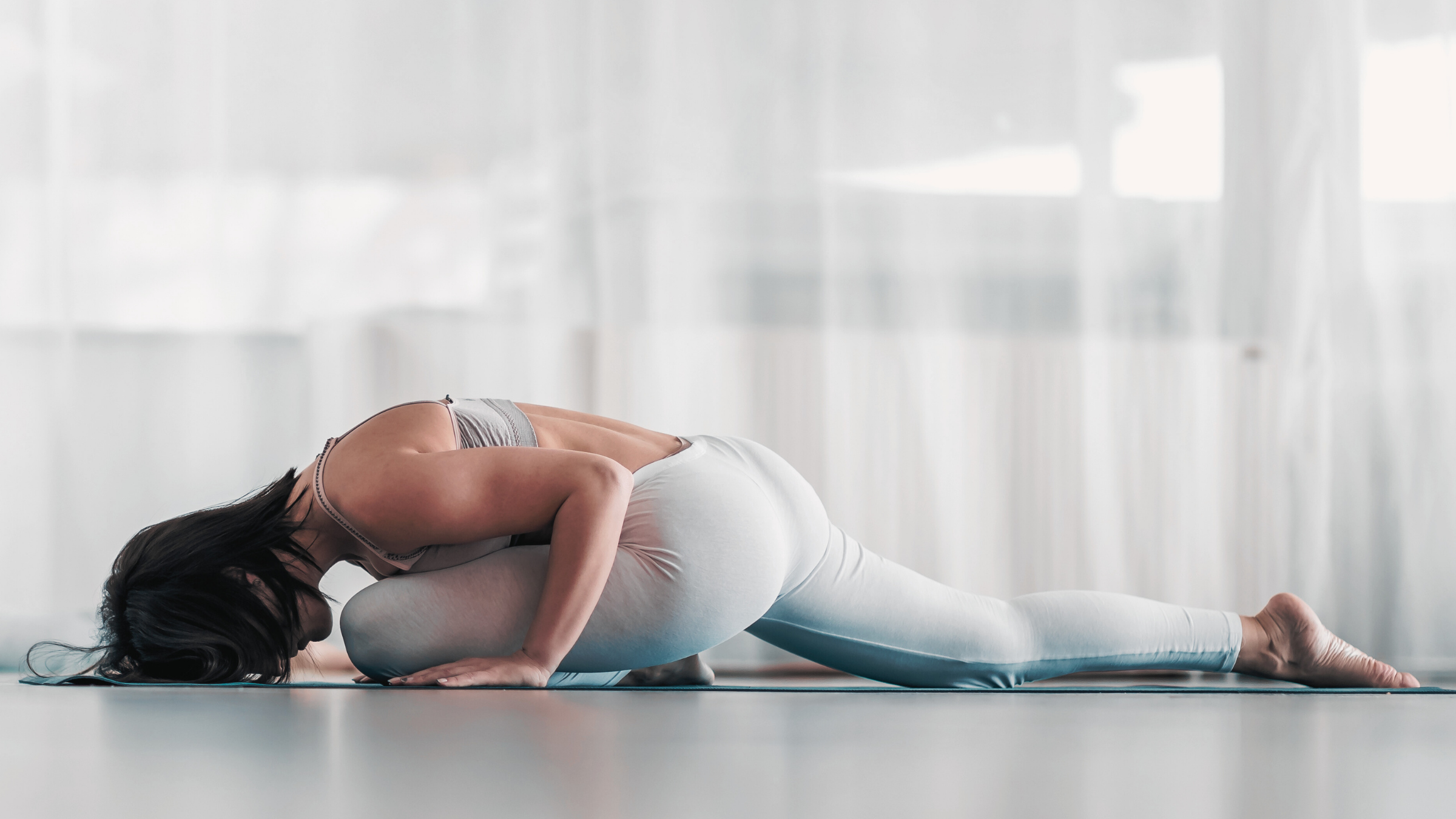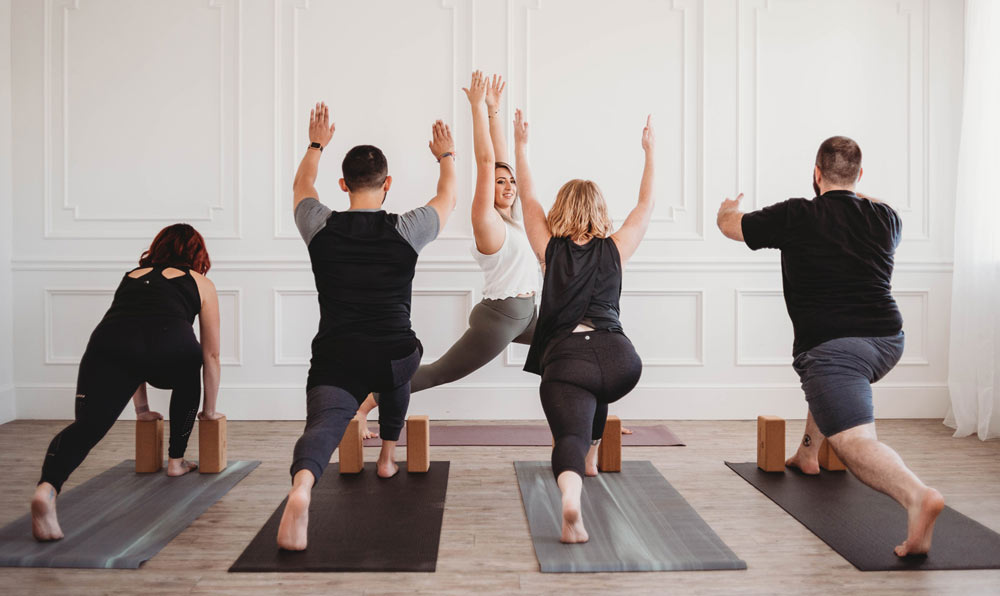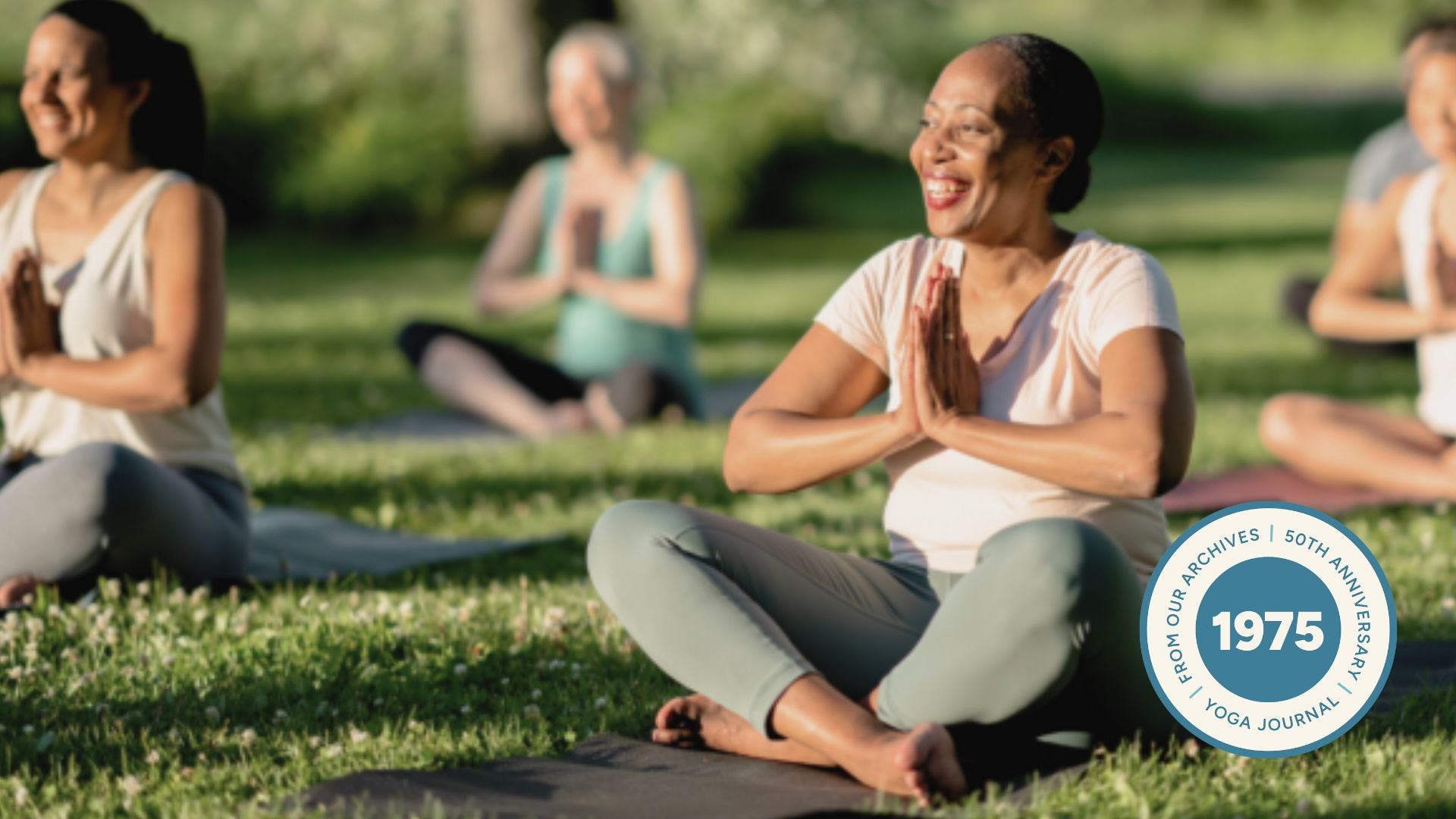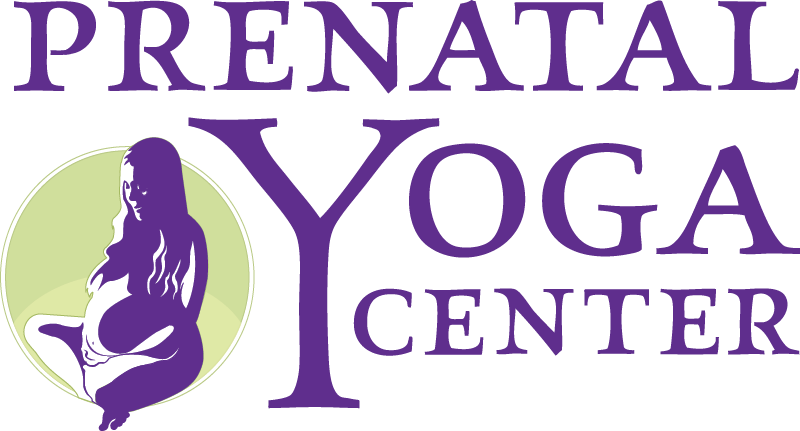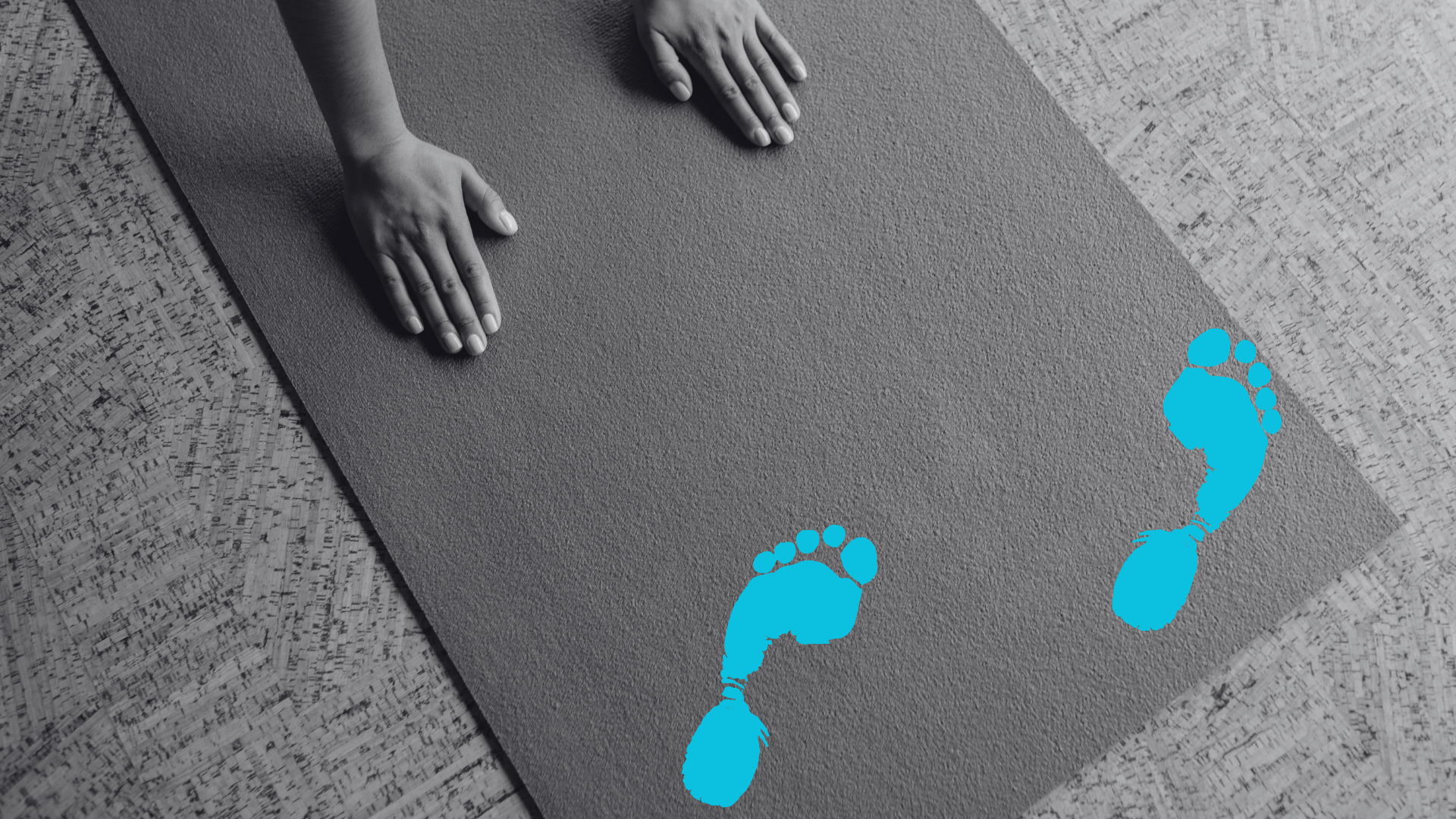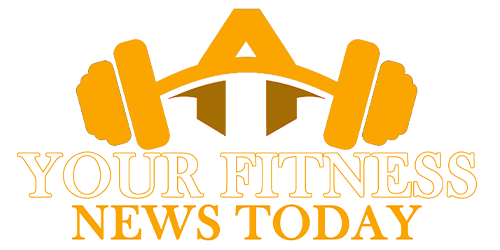Published November 13, 2025 05:12AM
In Yoga Journal’s Archives series, we share a curated collection of articles originally published in past issues beginning in 1975. These stories offer a glimpse into how yoga was interpreted, written about, and practiced throughout the years. This article first appeared in the January 1980 issue of Yoga Journal. Find more of our Archives here.
Just as breathing patterns reflect mental states and mental states affect our breathing, so does body posture interact with them both. A dejected person may express themselves by walking slowly and shuffling their feet; the head may be bowed, the chest collapsed and the shoulders rolled forward. They might as well shout, “I am sad!” Yoga teaches that, by changing the external form or posture, one changes internal attitudes or mental states, and vice versa.
Yoga asanas, such as Standing Forward Bend (Uttanasana), are highly stylized expressions of human physical, emotional and mental states. Every position of the body is an asana: as we bring more awareness to any position it becomes yoga. With this in mind, each body position can be examined in two ways: What does it say about my inner state? What effect does it have upon my mental being?
What Your Standing Forward Bend Says About You
The word Uttanasana can be broken into ut meaning intensity and tan meaning to stretch, implying an intense stretch to the spine and the backs of the legs. The beginner is apt to strive to touch the floor, often by bouncing up and down and exerting too much effort. This bouncing and striving represents a mentally aggressive attitude. It expresses the person’s attachment to the goal of touching the floor rather than attention to the quality of the action.
As you progress in practicing Uttanasana, you will note a softening as the body releases itself into the pose. The breath grows subtle and fluid, and the mind and body reach a gentle state of harmony. When this occurs the pose becomes a mental one, an expression of an inner state of quietness. The process of moving over time from an agitated, determined state of “doing” the posture to an inwardly strong, but outwardly soft, “being” in the posture is a process which allows the student to examine their own mind. You can see clearly how you respond to difficulties and discomfort—with surrender or resentment, weakness or resolve.
How to Practice Standing Forward Bend
When practicing Uttanasana, if you are a beginner, place the feet six inches from a wall and six inches apart. Then rest the buttocks against the wall, and bend forward from the hips, keeping the back as straight as possible when going down and when coming up. (Later, the pose can be practiced free-standing.) Exhale when you bend and when you straighten, and breathe quietly in the pose. Take care to release the back of the neck and minimize curving the back.
When Uttanasana is done well, you should feel a release of the back of the legs, a rotation of the pelvis and minimal action in the spine. Aside from the obvious effects Uttanasana has on the hamstrings, calves and spine, it has a profoundly soothing effect upon the mind.
A variation of Uttanasana has you bring the arms over the head while descending. This allows the student to move more deeply into the pose and exercise the muscles between the scapulum (shoulder blades). These muscles are often weakened by lack of exercise and poor posture. The more experienced student may want a greater stretch to the gastro-soleus or calf muscles. This can be accomplished by placing a book or mat under the balls of the feet. The weight is shifted forward, in order to maintain balance, creating a more intense stretch.
This position, however, can aggravate hyperextended knees. Commonly called “back knees,” this condition is usually caused by a laxity in the anterior cruciate ligament of the knee. If firm, this ligament normally prevents the tibia (shin) from moving back too far when the leg is straightened. Where this condition exists, a mat can be placed under the heels. The student should restrain from pushing back so much at the knees, and encouraged to pull up more on the kneecaps.
How Standing Forward Bend Teaches Balance
Hatha Yoga can be translated as the union or balancing of the ha (sun), activating principle, with the tha (moon), subduing principle. Each pose has either a cooling or activating effect upon the body and mind. The effect of a pose must also be considered in relationship to the one preceding and following it. Although, a pose has the ability to reveal some general tendencies regardless of its relationship to other poses.
How, then, does Uttanasana affect mental states? Uttanasana is a cooling pose. “After finishing the asana, one feels calm and cool, the eyes start to glow and the mind feels at peace.”* For this reason, it is beneficial to use Uttanasana between vigorous standing poses or at the end of an overly exciting day.
The balance of ha and tha is expressed in Patanjali’s Yoga Sutras by two philosophical concepts, abhyasa and vairagyam. Abhyasa is defined as disciplined determined practice. It is the will manifesting and the strength of individuality expressing itself, and vairagyam is the ability to surrender and give way.
Abhyasa, in Uttanasana, is represented by the front of the thighs, since the quadriceps femoris muscle located there must be held very firmly, so that the knee does not bend against the strong stretch felt at the back of the leg. In this way one learns tenacity, strength of will. It develops that inner strength necessary in dealing with other difficult situations. The, back of the legs, specifically the hamstring muscles in the thigh, represent vairagyam or surrender. Unless you relax the muscles, the pose will be agitated and full of tension. When the firmness of the front legs is maintained, surrender of the backs of the legs can be felt. Thus a balance is reached between strength and softness, between resistance and letting go, between abhyasa and vairagyam.
Yoga psychology is contained in every asana. In Uttanasana, one learns the lesson of appropriateness: it is appropriate for the front thighs to resist and the back thighs to surrender. Learning the appropriate response, whether it be in Uttariasana or in life, is one of the most difficult and challenging parts of self-growth.
*B.K.S. Iyengar: Light on Yoga. Schocken Books, New York. P. 76.

